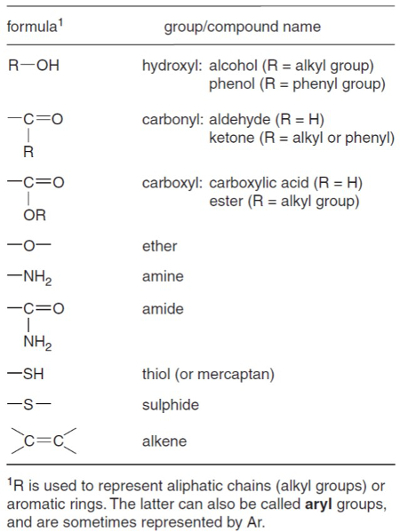JoVE Science Education
Earth Science
A subscription to JoVE is required to view this content.
Purification of a Total Lipid Extract with Column Chromatography
Source: Laboratory of Jeff Salacup - University of Massachusetts Amherst
The product of an organic solvent extraction, a total lipid extract (TLE), is often a complex mixture of hundreds, if not thousands, of different compounds. The researcher is often only interested in a handful of compounds. The compounds of interest may belong to one of several classes of compounds, such as alkanes, ketones, alcohols, or acids (Figure 1), and it may be useful to remove the compound classes to which it does not belong in order to get a clearer view of the compounds you are interested in. For example, a TLE may contain 1,000 compounds, but the Uk'37 sea surface temperature proxy is based on only two compounds (alkenones) and the TEX86 sea surface temperature proxy is based on only four (glycerol dialkyl glycerol tetraethers). It would behoove the researcher to remove as many of the compounds they are not interested in. This makes the instrumental analysis of the compounds of interest (alkenones or GDGTs) less likely to be complicated by other extraneous compounds.
In other cases, an upstream purification technique may have produced compounds you wish to now remove from the sample, such as the production of carboxylic acids during saponification in our previous video. In both of the above cases the purification technique called column chromatography is very useful.

Figure 1. Geochemically important functional groups. From Killops and Killops1.
1. Setup and Preparation of Materials
- Obtain a total lipid extract (TLE) using a solvent extraction method (Sonication, Soxhlet, or Accelerated Solvent Extraction (ASE)).
- Gather the following: combusted borosilicate glass pipettes and bulbs, silica gel, hexane, dichloromethane (DCM), and methanol.
- These materials can be purchased from any chemical retailer. The reagents should be pure and free from hydrocarbons.
- Also obtain combusted glass wool and 4-mL borosilica
This purification technique produces three different vials, each containing a different compound class or group of compound classes. The complexity of any sample to be analyzed on an instrument has been vastly decreased. This process also removes compounds, such as acids produced during a saponification, that can actually stick to parts of the instruments, because of their low volatility, which would decrease their accuracy, precision, and lifetime.
Alkenones and isoprenoidal GDGTs are both very common constituents of marine sediments and can be found across the world's oceans. Alkenones are being increasingly detected in lake sediments, although the organisms responsible for their production are different than in the ocean, and thus the relationship between the Uk'37 ratio and water temperature (calibration) is different from the ocean and even between separate lakes. Isoprenoidal GDGTs are found in some large lakes and just like alken
Killops, S. and Killops, V. Introduction to Organic Geochemistry. Blackwell Publishing, Malden, MA (2005).
Skip to...
Videos from this collection:

Now Playing
Purification of a Total Lipid Extract with Column Chromatography
Earth Science
12.4K Views

Determining Spatial Orientation of Rock Layers with the Brunton Compass
Earth Science
25.4K Views

Using Topographic Maps to Generate Topographic Profiles
Earth Science
32.0K Views

Making a Geologic Cross Section
Earth Science
46.9K Views

Physical Properties Of Minerals I: Crystals and Cleavage
Earth Science
51.6K Views

Physical Properties Of Minerals II: Polymineralic Analysis
Earth Science
38.0K Views

Igneous Volcanic Rock
Earth Science
39.6K Views

Igneous Intrusive Rock
Earth Science
32.3K Views

An Overview of bGDGT Biomarker Analysis for Paleoclimatology
Earth Science
5.4K Views

An Overview of Alkenone Biomarker Analysis for Paleothermometry
Earth Science
7.2K Views

Sonication Extraction of Lipid Biomarkers from Sediment
Earth Science
8.6K Views

Soxhlet Extraction of Lipid Biomarkers from Sediment
Earth Science
18.4K Views

Extraction of Biomarkers from Sediments - Accelerated Solvent Extraction
Earth Science
8.7K Views

Conversion of Fatty Acid Methyl Esters by Saponification for Uk'37 Paleothermometry
Earth Science
10.1K Views

Removal of Branched and Cyclic Compounds by Urea Adduction for Uk'37 Paleothermometry
Earth Science
6.4K Views
ISSN 2578-367X
Copyright © 2025 MyJoVE Corporation. All rights reserved
We use cookies to enhance your experience on our website.
By continuing to use our website or clicking “Continue”, you are agreeing to accept our cookies.